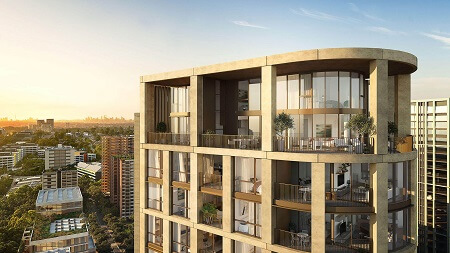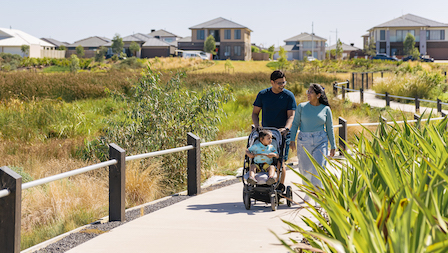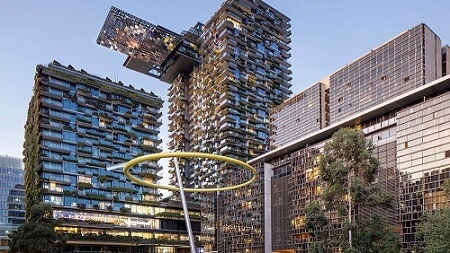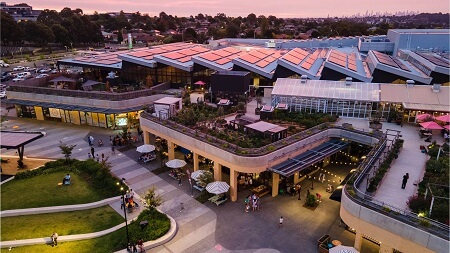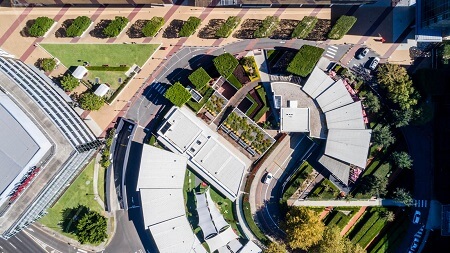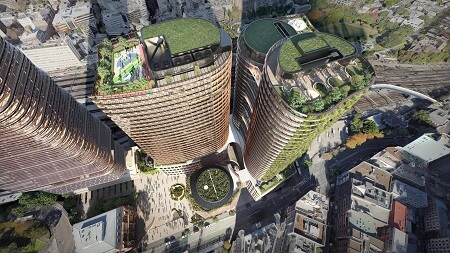Should you rent or buy in Australia?

For those taking their first steps into the Australian real estate market, this exciting journey often begins with a common dilemma: Is it better to rent or to buy? Whichever path you choose to take, both options represent a multi-year financial commitment. As we head into 2026, this decision is complicated by changing interest rate predictions and ongoing affordability pressure, making thorough research key before you take the plunge.
In this article, we’ll examine the key factors influencing your choice in the buy vs. rent debate, providing the clarity you need to weigh your options and confidently secure your first Australian property.
Key Takeaways
- Renting provides short-term lifestyle flexibility and much lower upfront costs.
- Buying gives you long-term financial security through capital growth and equity building.
- The ultimate choice hinges on your lifestyle goals: buying offers control and permanence, while renting provides freedom from maintenance and a path for rentvesting.
- Market forecasts for 2026 suggest continued modest house price growth, potential for further interest rate cuts, and tight rental markets.
Renting a home in Australia
Renting, often dismissed as ‘dead money’, can be a strategic choice for many Australians, particularly in expensive capital cities like Sydney, Brisbane, and Melbourne. It offers a way to live where you want right now, without the long-term shackles of a mortgage.
Benefits of renting
- Flexibility: Renting allows you to relocate quickly for work, family, or lifestyle changes without incurring selling costs like agent commissions. You are typically only bound by a 6 or 12-month lease.
- Low upfront costs: Upfront costs are generally limited to a rental bond (usually 4 weeks’ rent) and a couple of weeks’ rent in advance.
- All-inclusive amenities: For apartment dwellers, your rent often covers access to complex facilities like pools, gyms, and communal gardens.
Downsides of renting
- Fluctuating rent prices: In a tight rental market like the one Australia has experienced recently, your rent is at the mercy of the landlord at the end of the lease period. Rent hikes can be brutal and unpredictable.
- Instability: Despite strong tenancy laws, you are ultimately living in someone else's asset. Landlords can issue a ‘no grounds’ notice to vacate (depending on jurisdiction) or decide to sell, forcing you to move.
- Limited customisation: Want to paint the walls or hang up your family pictures? This usually requires permission from your landlord.

Buying a home in Australia
For many, owning a home remains the ultimate dream. It is an emotional and financial goal that brings a sense of stability and control.
Benefits of buying
- Long-term capital growth: Historically, Australian property has shown strong long-term growth. While short-term volatility exists, owning a well-located property can see your asset value increase significantly over decades.
- Security: Once the property is yours, you have total control. No one can kick you out, and you have the certainty of a fixed (or controllable) monthly mortgage repayment.
- Tax benefits: Homeowners can benefit from the capital gains tax exemption on their principal place of residence when they eventually sell. Investors can also benefit from negative gearing.
Downsides of buying
- High upfront costs: Often the biggest hurdle, buying demands a hefty deposit (ideally 20% to avoid Lender's Mortgage Insurance or LMI) and thousands of dollars for stamp duty, legal fees, and other settlement costs.
- Ongoing homeownership costs: Beyond the mortgage, you're solely responsible for all maintenance, repairs, council rates, water rates, and strata/body corporate fees (for apartments/townhouses).
- Market volatility: While the long-term trend is up, your property's value can fall in the short term. If you need to sell quickly in a downturn, you could lose money.
When to rent, when to buy
Now that we’ve broken down the pros and cons of each, let's look at the specific circumstances that make renting or buying the clear winner for you.
| Renting makes sense when… | Buying makes sense when… | |
|---|---|---|
| Lifestyle and flexibility | You prioritise a flexible, low-maintenance lifestyle over long-term financial security. | You prioritise long-term financial security, building equity, and having the freedom to renovate and customise your home. |
| Timeline | You are not planning a long-term stay or value the ability to moveeasily. | You plan to stay in the same location for 7 to 10 years or more, allowing you to ride out market cycles. |
| Financial circumstances | You don't have a sizable deposit saved up (atleast 5-10% of a purchase price, plus extra costs). | You have a stable income and a significant deposit saved, enabling youto comfortably pay the mortgage. |
| Location | You aim to live in an area that is unaffordable to buy in, but can afford to rent in, and are happy to invest your savings elsewhere (a strategy known as rentvesting). | You are buying in a location where you intend to establish roots for the long term. |

Key factors to consider before deciding
To make an informed choice in 2026, you must consider the wider economic landscape. To settle the rent vs. buy dilemma, understanding these factors is crucial:
Current property and rental market conditions
A crucial factor in any rent vs. buy cost comparison is the current market. Many experts are forecasting continued house price growth across Australia in 2026 , particularly in capital cities like Sydney, Brisbane, and Melbourne, supported by low supply and strong migration. KPMG forecasts that units and townhouses are expected to see stronger growth in some cities as they offer a more affordable entry point.
The national vacancy rate remains exceptionally tight at 1.2% as of September 2025. This lack of supply is driving further rent increases and fierce tenant competition. The market outlook suggests this tight supply will continue throughout 2026, meaning tenants should brace for continued high costs and challenging rental conditions.
Home loan interest rates
The cost of borrowing is a primary driver of market activity, and the Reserve Bank of Australia (RBA) has signalled a definitive shift, having already delivered 75 basis points of cash rate cuts in 2025. This includes three 25 basis point reductions, setting the rate at 3.60% as of August 2025. This easing cycle is widely expected to continue into late 2025 and early 2026.
What does this mean for future buyers or renters?
- For buyers: Lower interest rates increase borrowing capacity and improve affordability, which typically puts upward pressure on property prices, making it a potentially strategic time to enter the market.
- For renters: While lower rates don't directly impact rent, they do make investment properties more attractive to landlords, which may eventually help to increase rental supply.
Upfront costs
The biggest difference between buying and renting is the initial financial hurdle.
Renting is minimal, generally requiring only a bond (typically 4 weeks' rent) and the first month's payment. In contrast, buying demands a substantial upfront commitment. This includes the large deposit, significant non-recoverable costs like stamp duty, legal/conveyancing fees, mortgage registration fees, and property inspection reports.
Ongoing costs
Beyond the purchase, the ongoing financial responsibilities are also drastically different.
Renters have simpler, lower-risk costs, with the landlord bearing full financial responsibility for the property. Tenants are primarily responsible only for the rent, personal utilities (like electricity, gas, and water), and routine upkeep.
Owning means managing all property-related expenditures directly, including council rates, mandatory insurance, and any strata fees. While owners cover all maintenance and repairs, this responsibility grants the homeowner full control over their asset. Crucially, it provides the major benefit of building equity and the freedom to invest in value-increasing upgrades.
Lifestyle flexibility vs. stability
Your decision will also depend on your personal lifestyle preferences, which means accounting for the non-monetary benefits of renting vs. buying.
Are you a young professional who needs the flexibility to move cities for a better job? Renting wins. Are you a growing family who needs security, space, and a feeling of home to raise your kids? Buying may be the better fit.
The cost equation often balances out over the very long term, so it will come down to which option best supports your current life stage and your long-term vision of freedom and stability.

Renting vs. buying: Cost comparison in 2026
To get a better understanding of how the costs of renting vs. buying in Australia differ, here’s a sample cost breakdown if you were to rent or buy an $800,000 property (e.g., a unit in Sydney or a house in Brisbane):
| Factor | Renting | Buying |
|---|---|---|
| Upfront costs | Approx. $3,900 to $4500 (bond and 2 weeks’ rent) | $45,000 to $200,000 (covers 5% to 20% deposit, stamp duty, fees, andLMI if applicable; LMI is often waived for eligible First Home Buyers) |
| Estimated monthly housing costs | Approx. $2,800 to $3,200 per month (based on current $650 to $750weekly rent) | $4,000 to $4,300 per month (Principle andInterest on a $640k loan) |
| Annual non–mortgage/non-rent costs | $0 (landlord’s responsibility) | Approx. $8,000 to $12,000 (rates, insurance, maintenance, andstrata/body if applicable) |
| Financial return | None (money is 'spent') | Building equity and potential capital growth |
Conclusion: Which is best in 2026?
The choice between renting and buying boils down to a fundamental trade-off: short-term flexibility vs. long-term security and wealth creation.
Renting requires minimal upfront capital and offers the freedom to move easily with minimal maintenance worries. Buying calls for a major initial financial commitment but provides the powerful benefit of building equity in a stable asset, leading to lower housing costs in retirement.
The right answer depends entirely on your financial readiness and life stage:
- First-home buyers: With interest rates expected to trend lower and house prices ticking up, 2026 may provide a window to buy ahead of changing market dynamics. Buying makes sense for stability and to start building your own assets.
- Young, mobile professionals: The cost and effort of buying and selling within a short timeframe (under 7 years) often wipes out any capital gains. Renting gives you cost-effective mobility.
- Investors: The combination of continuing strong rent growth and predicted modest price growth makes units and townhouses an attractive investment. Rentvesting (buying an investment property while renting for lifestyle) remains a smart strategy for many.
- Families seeking stability: The financial advantages of buying only truly kick in over the long haul. If you've found your forever home and plan to stay put, buying gives you the stability and certainty you need.
Ready to move from researching to owning in 2026? Connect with Frasers Property today and discover our vibrant residential communities.
Disclaimer: All information set out in this article, including but not limited to estimated calculations, statistics, opinions, and external links, is provided as a general guide only as at the date of publication and does not constitute advice. Actual figures and the suitability of the information may vary depending on individual circumstances. Purchasers are responsible for seeking independent professional advice or making their own enquiries in relation to any rental or purchase decisions. No representations or warranties are made as to the accuracy, currency, or completeness of any estimates or their contents.
Date of publication: November 2025.
See more articles on


